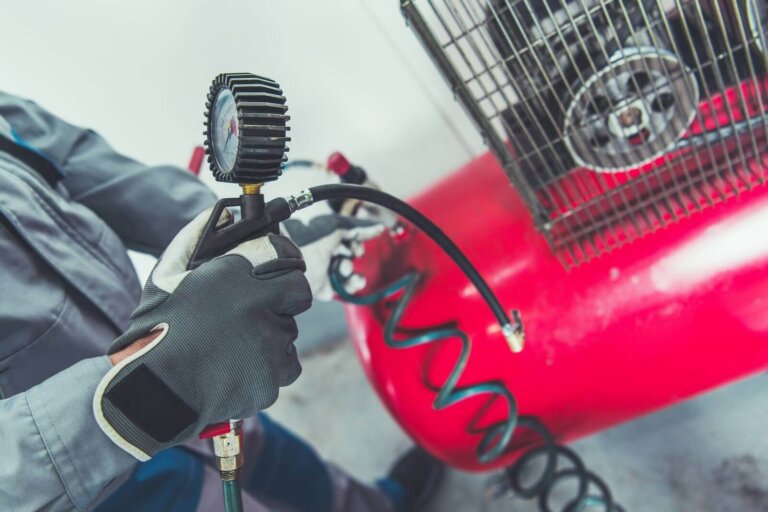The operational continuity of its inputs and technical equipment is essential to ensure the productive efficiency of a vital sector for the population’s food sustenance. A strategic objective where the use of digital technology and mobile applications increase its importance, thanks to its greater competitive advantages.
Modern society bases its progress and development on the improvement of the essential strategic activities of its economy. One of these is agribusiness, a segment on which practically all of the world’s food production depends.
In order to the agricultural industry work without interruptions, needs inputs, equipment and machinery that operate continuously and efficiently. Moreover, also requires, specialized monitoring, control and prevention processes, to minimize failures or damage.
One of the methodologies that guarantees more and efficient results is the “checklist”. This consists of a previously systematized monitoring of the most important elements for the correct maintenance of the equipment.
In this way, the operator of the machinery can determine which elements have the quality parameters necessary for an efficient operation. On the other hand, determine which ones should be repaired or replaced, among other action parameters already defined.
From this premise, we can conclude that having a checklist is one of the main strategic objectives of any agricultural company, regardless of its size or area of action. Moreover, it must be an essential basis for systematizing the work parameters in everything related to planning and management control of your production teams.
The functionality and significance of these lists is so important that it not only involves the personnel who work directly in the field, operating or checking the machinery, but also the administrative personnel of the company. This characteristic allows the entire human team to have a clearer and more precise general vision of their joint contribution to the successful management of the company.
This importance leads to the fact that the checklist have, also a great value as a work order. This allows better traceability and quality control in all internal processes of the company.
QUALITATIVE AND OPERATIONAL ADVANTAGES
The versatility of checklists in agribusiness allows their use both in routine maintenance of machinery, and in preventive inspection of equipment. Even the same company can maximize these advantages through two different models of lists, specifically adapted to each of both needs.
We can organize this duality of functions as follows:
A. Checklists for inspecting machinery entry and exit
Service companies that rent agricultural machinery to rural owners mainly use this model. In these circumstances, checklists allow, for example, to control the entry and exit of the machines and, at the same time, serve as a test and safety instrument for both the owner of the equipment, and who rents it.
In this way, it would be possible to check the general condition of the machinery before and after its rental, establishing specific parameters for measurement or comparison such as engine operation, fluid level indicators, filter operation or tire condition, among others.
2. Checklists for machinery maintenance
In these cases, the main beneficiaries are agricultural companies that subcontract maintenance and technical assistance services (offered by specialized firms that attend them in the field).
However, those who carry out this task should remember that the checklists are as important as the professional in charge of applying them. He is who, precisely, performs the respective checklist, takes notes, takes photographs and generates the service reports that will guarantee greater operability.
In the same way, these checklists can also be used as work orders to execute the respective contracted maintenance actions; and at the same time, as a record and history of all the work carried out.
Of course, the operational versatility of farm machinery checklists is not restricted just to these areas. They are also useful for systematizing a wide range of procedures such as, for example, taking care of the safety of the personnel who operate the machines, controlling the associated infrastructure, verifying the status of the storage facilities, and regularly scheduling preventive or corrective maintenance tasks, among many other options.
STEPS TO DEVELOP A CHECKLIST
To take full advantage of the benefits that checklists bring to agribusiness, we can follow three clearly defined steps:
Step 1: Process
This is a basic condition for success, and all technical personnel in charge must follow it meticulously. In the first place, it is necessary to define which services carried out more frequently (corrective, preventive or inspection maintenance). Only then, we can determine the most appropriate following procedure. For example, if we are going to perform preventive maintenance on a wheat harvester, we should ask ourselves the next questions: What is the necessary plan step by step? And, what are the elements that we must check and test?
Once these points are clear, the central steps of the checklist are determined. These are structured in the form of questions with associated answers. These answers could be closed, open, of specific amounts or multiple choice, among other possibilities.
Although a checklist can combine all these variables, the important thing is to have the entire previous framework well defined and structured, according to the characteristics of each team. In this way, it will work in accordance with a specific standardization.
This implies that, beyond the versatility of each checklist (to build them in a personalized way, and in accordance with the internal procedures of each company), the usual and essential technical elements must always be taken into account in any action of maintenance.
These technical aspects include the following parameters:
– Cleaning and change of filters (hydraulic, air and fuel system, among others).
– Lubrication (engine, steering and gearbox, among others).
– Verification of critical components (such as radiator, coolant container, battery, chassis, tires and additives, among others).
– Conservation and storage (check the physical space where we keep the machinery and check if they are covered or protected from contamination or the elements, for example).
– Modifications or installation of new parts (inform the name of the manufacturer and the quantity of parts exchanged, and justify the changes made so that the history of the machinery is as complete as possible).
Step 2: Standardization
This second step is very important to avoid errors or wasted resources due to duplicate work. It consists of establishing what we can do in order to ensure, in the daily work, that all teams will respond to the service order or checklist, with the same quality standard.
If we use “classical” methods, such as paper lists or Excel spreadsheets, it will be necessary to face various additional difficulties, and carry out a very strict control, since these are systems with a very high error rate. Consequently, this will entail greater expenditure of resources in on-site inspections, feedback, training, and double work of reviewing or correcting the information.
On the contrary, if we design and implement a checklist through mobile applications or other specialized technological solutions, we can assure and achieve a natural standardization, since these digital tools have their own special resources to ensure it.
Step 3: Format
As we have already seen, the three most commonly used types of maintenance checklist are paper files, Excel spreadsheets, and mobile apps.
While all are helpful, the first two also have negative side effects that significantly reduce the agility and efficiency of the entire process. Among these, we can identify the following:
– Loss of forms and information.
– Forgetting service orders or checklists.
– Incompatibility with the routine of the field, due to the complexity of working with paper or workstations in the field, or in places of extreme environmental complexity.
– Minor contributions to optimize the standardization and readability of data, as well as for a more efficient handling of the revision history.
– High risk of making mistakes in data entry, or in reporting.
– Exponential increase in duplicate work and loss of time, both in the field and in the office.
– Low reliability, due to the scarcity of verification resources.
– Difficulty generating data, indicators and history; and, consequently, of an adequate commercial strategy.
The use digital technology immediately eliminate all these negative externalities, which can translate into a high rate of contingencies and operational crises. Its modern contribution effectively helps to face these challenges and have a more agile and profitable operation.
ADVANTAGES OF THE TECHNOLOGY
This undoubted advantage has led to the emergence of various applications in recent years capable of optimizing these processes, as well as projecting, designing and applying more agile and safer agricultural machinery checklists.
All this translates into total, integrated, simple and permanent control of the operation, not only in the field, but also in all its phases. In the world of agricultural maintenance, this reflects in:
Ease and practicality: All checklists, work orders and reports are completed within the application itself with agility and quality. This definitely ends with the loss of time and information.
Reliability and standardization: Unlike paper formats or Excel spreadsheets, the application offers the option of customizing the technological solution to the particular characteristics and challenges of fieldwork. These goals are direct consequence of the use of tools such as:
– Date and time stamp.
– Digital signature.
– Determination and solution for compliance and non-compliance problems,
– Option to attach photos and images for a more rigorous and detailed verification.
Intelligent automatic reports: The different technological solutions can take all the information stored on mobile devices and automatically export it to reports prepared in the format required by each company (such as PDF or Excel documents). This includes all the data and graphical information collected during the day.
Off-line operation: As Internet access is not always available in rural areas; modern applications allow technicians directly process all the information in the checklist on their own mobile equipment, without data loss.
Accuracy: The GPS monitoring option, provided by some solutions, allows knowing and controlling parameters, such as day, starting and ending time of a job, as well as the exact location where the service was performed.
Flexibility: Modern mobile solutions also offer, in digital and efficiently organized format, multiple forms for different types of services, machines and clients.
Greater control: Today it is also possible to have full knowledge of variables such as calculating how much each visit costs and productivity time. For this, the applications have tools such as graphs and tables, which allow detailing the quality of the services provided and the performance of the equipment, among other parameters. This helps chart operational improvements and design strategic action plans for the company.






